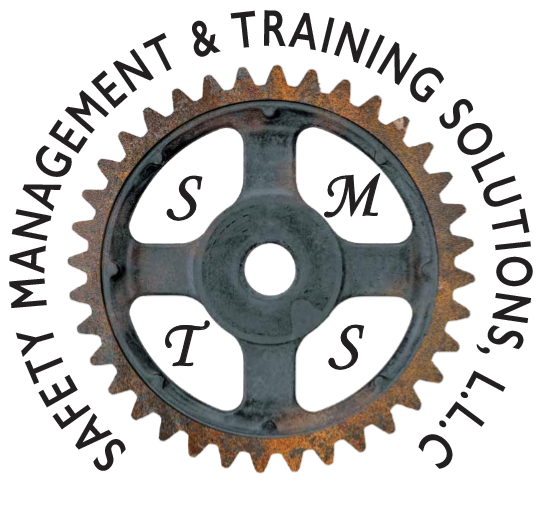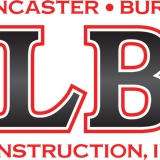Information
-
Assessment Title
-
Document No.
-
Client / Site
-
Conducted on
-
Prepared by
-
Location
-
Personnel
Assessment
General Work Environment
-
Are all work area clean and dry?
-
Trash removed daily?
-
Are aisles, walkways, doorways, and exit routes kept clear and unobstructed?
-
Are toilets provided, kept clean, and safe?
-
Are all MSDS on site in an area that is readily accessible to all employees?
-
Are measures in place to protect the public from exposure to work activities and equipment?
-
Are required postings readily available to all employees in the workplace?
-
Are weekly "tool box" safety meetings held and documented with sign in sheets?
-
Is material piled, stacked, or racked in a manner to prevent it from tipping, falling, collapsing, rolling, or spreading?
-
Comments:
First Aid and Emergency Equipment
-
Are emergency telephone numbers posted on the job site?
-
Is there at least one person on site trained in first aid and CPR?
-
Are first aid kits easily accessible, inspected, and stocked at least monthly?
-
Are there any exit that open into streets or other high traffic areas? Are adequate warnings provided to alert employees of the hazard?
Fire Protection and Prevention
-
Is there at lease one ABC fire extinguisher for every 3000 sq ft of work area?
-
Are fire extinguishers clearly visible and unobstructed at all times?
-
Are fire extinguishers inspected monthly for proper tags, pins, hoses not cracked or plugged, fully charged, and tags up to date?
-
Are fuel gas cylinders and oxygen cylinders secured, separated by 20 feet or have fire resistant barriers while in storage?
Fall Protection
-
Are holes and other openings guarded by a grate, cover, guardrail, or equivalent on all sides?
-
Are there stairrails or handrails on all stairways having four or more steps?
-
Are railings provided on ramps?
-
Do all elevated surfaces have guardrails at least 42 inches high?
-
Are all elevated surfaces equipped with a safe means of access?
-
Are fall protection harnesses and lanyards used by every employee working 6 feet or higher above the ground or on steeply pitched roofs, 6/12 or greater?
-
Are fall protection harnesses and lanyards a minimum of 1/2 inch nylon or equivalent, and short enough to prevent employees from falling more than 6 ft?
-
Are lifelines (lanyards) secure above the point of operation to an anchor point that will withstand 5,000 pounds of force for each attached worker?
-
Are harness, lanyards, and other fall protection equipment inspected prior to use?
-
Where a job site has protruding steel rebar below the work level, are the steel rebar protected by covers to prevent impaled injuries?
Portable Ladders
-
Are all ladders maintained in good condition and inspected before each use? Are broken and defective ladders taken out of service immediately?
-
Are ladders being used for their designed purpose only? (Step ladders/Extension ladders)
-
Are ladders being used beyond their maximum intended load?
-
Are ladder rungs/steps slip-resistant and free of dirt, grease, oil, ice, snow, etc?
-
Are employees facing the ladder when climbing up and down?
-
Are employees standing below the top 2 steps when using step ladders?
-
When ladders are used to gain access to elevated platforms, does the ladder always extend at least 3 feet above the elevated surface, and secured properly?
-
Are ladders placed on dry, stable footing, and properly secured?
Materials - Handling, Storage, Use, and Disposal
-
Are compressed gas cylinders (propane etc.) secured and stored properly, and blocked from traffic and vehicle hazards?
-
Are concrete batch/plants/mixing facilities properly inspected for electrical and other potential hazards or damage?
Scaffolding
-
Are scaffolds set up on level, stable ground with dry footings?
-
Has the scaffold been assembled and inspected by a competent person?
-
Was the scaffold inspected prior to use and scaffold tag properly filled out?
-
Do all scaffolds higher than 4 feet have 42 inch high guardrails and mid rails halfway between the top and platform?
-
Are scaffolds in good working condition with no damage or missing parts?
-
Do all planks on scaffolds fit tightly with no open spaces between boards?
-
Where planks are overlapped are they lapped over the supports?
-
Do all scaffold planks extend 6-18" beyond the end of the scaffold frame?
-
Are all ladders or stairs used to access scaffolds either tied or welded to the scaffolds for safe access? Are ladders positioned to provide direct access?
-
Are materials being stockpiled on scaffold? Are all materials removed from scaffold at the end of the day?
-
Are open sides of scaffold less than 14 inches from the face of the work?
-
Are platforms of 10 feet or less extending over their end supports no more than 12 inches?
-
Are guardrails in place at the open ends of the scaffold?
-
Has the movement of occupied scaffold been prohibited (unless designed by a registered professional engineer)?
-
Have toeboards been installed to prevent falling objects?
-
Is "X" bracing installed on the ends of the scaffold and every third set of post horizontally and every forth runner vertical?
-
Are all pins installed where required and locked?
-
Are castors locked during use?
-
Are castors pinned into the frames or adjustment screws?
Electrical
-
Are all cord-connected, electrically-operated tools and equipment double insulated or effectively grounded?
-
Are ground-fault circuit interrupters provided on all temporary electrical circuits?
-
Are all electrical rooms/panels secured and have proper signage?
-
Do all extension cords have 3-prong plugs and all 3 prongs intact?
-
Are all electrical cords inspected and in good working condition (i.e. no splices, frays, or the ground prong is removed)?
-
Are extension cords a No. 12 or larger gauge and properly marked?
-
Where electrical cords must cross roads, driveways, or walkways, are they protected by solid, weather-resistant bridges to prevent damage to the cords?
-
Are multiple plug adapters (octopus plugs) prohibited?
-
Are electrical circuits and equipment shut off, de-energized, and locked out before equipment installation, repairs, maintenance, or servicing?
-
Are unused switches, receptacles, and junction boxes covered with tight-fitting covers or plates
Trenching and Shoring
-
Are spoils, materials, and equipment set back a minimum of 2 feet from edge of the excavation?
-
Are barriers in place around excavation area?
-
Is a means of egress available in all trenches that are 4 feet deep or more
-
Are means of egress within 25 lateral feet of workers?
-
Is high visible PPE worn by all employees working in and around trenches?
-
Are employees protected from loose rock or soil?
-
If needed are trench boxes/shoring used?
-
For the soil type is the excavation sloped properly?
Power-Actuated Tools / Hand and Power Tools
-
Are employees who operate power actuated tools properly trained and carry a valid operator's card?
-
Are power actuated tools inspected for obstructions or defects before use?
-
Are all tools maintained in safe condition?
-
Are damaged and defected tools removed from service and repaired or replaced as soon as the damage or defect is found?
-
Are grinders, saws, and other tools with moving parts, equipped with appropriate safety guards to prevent physical contact with moving parts?
Job Site Traffic Control
-
Have traffic concerns been addressed? Subcontractors been advised of job site traffic requirements and parking areas?
-
Are all workers wearing Hi-Vis vests while on foot on job site?
-
Brakes, lights, signals, and alarms operative on ALL equipment on site?













